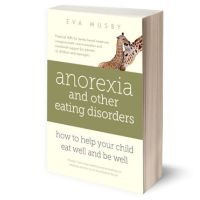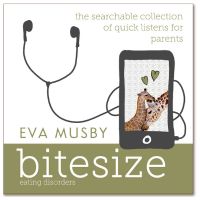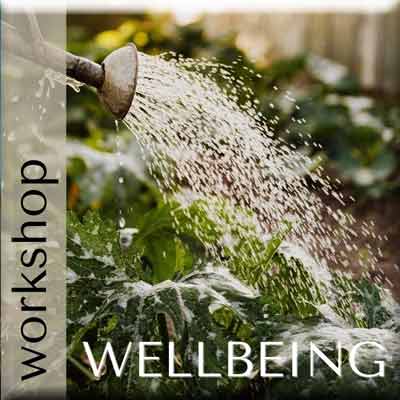An overview of the help you'll find in this book, and suggestions for finding your way around the information quickly.
This is the whole of Chapter 1 of ‘Anorexia and other eating disorders – how to help your child eat well and be well’
The practical and emotional tools parents are asking for
If your child has an eating disorder, you’re likely facing a flood of questions: How do I help? What do I say? What actually works? Whether you’ve secured treatment from experienced professionals or are stuck on a waiting list, the learning curve is steep.
A common refrain among us parents is ‘I wish I’d known from the start what I know now.’ My aim is to accelerate your learning and give you the confidence to support your child all the way to recovery.
Yes, recovery. Treatments have improved dramatically and you are going to see your child flourish again. First, you need the know-how.
Take the big question: ‘How do we get our child to eat?’ With our daughter, professionals were clear that we should take responsibility for meals – but they wouldn’t (or couldn’t) tell us how. We wasted months going down blind alleys, unaware of the tips that could have saved her months of misery.
This book translates the best treatment principles into the practical how-tos you’ve been longing for. As a parent wrote to me:
“Your practical refeeding scenarios saved us. Until then I knew what we needed to do but did not know how. And it worked for us. Having the words and dialogue to say was what I needed when a mother's instinct flies out the window.”
Alongside the practical questions, we need help with emotions: ours and our child’s. Eating disorders can turn a happy home into a war zone. If you’re anything like me, you’ve panicked and shouted, threatened and cried. Your child may no longer trust you. Perhaps you feel exhausted, incompetent and bruised.
The good news is that with practical tools, emotional skills, and compassionate communication, you can support your child, no matter what.
Children can achieve wonderful things when we treat them with compassion, weather their outbursts, stay persistent, and nurture trust and connection.
“I came across your draft whilst in the middle of an emotional meltdown, both mine and my daughter's. With your advice, I turned the situation round. Deep breath and hand on heart. I am new to this but learning very fast, or trying to. Some of what you say has saved me from sinking into depths of despair.”
Our daughter made rapid progress once we understood what she needed from us. It’s been a joy to see her thrive, and as a parent, former scientist, and a writer, it’s deeply rewarding to pass on resources to other families.
“I immediately put some of your suggestions into practice with almost instantaneous results.”
This is a big book because I cover the many questions parents encounter along the journey. I provide plenty of signposting so you can quickly find the answers you need. When the evidence doesn’t point to a single approach, I share a range of strategies known to help. I share learning from personal experience, insights from other parents, and the knowledge of clinicians and researchers around the world (notice the copious endnotes).
It’s my heartfelt hope that among this wealth of expertise, you’ll find what you need to help your child recover and for your relationship to flourish.
What you will get from this book
My aim is to help you take action, while also making sure you feel supported. If your child has an eating disorder, I’m assuming you’re not feeling at your best right now, so I want to take good care of you. I won’t find disaster stories here. This is most certainly not a misery memoir. I will do everything I can to empower you. Not because I’m a nice person, you understand, but because the evidence is that results are best when parents are supported in caring for their ill child.
At some point, most parents have questions or doubts about the method used to treat their child. I will help you recognise the approaches that are backed by research and those based on outdated theories.
I’ll offer you tools you can use right away and in the longer term. My intention is to walk you through the entire journey to wellness.

I will address the practical questions that come up, again and again, in parent circles, such as:
- How do I get my child to eat foods she’s avoided for months? To eat anything?
- Will I push him over the edge if I stop him exercising?
- The specialist wants anotherr 3 kg. Won’t that make my daughter even more anxious?
- What should we do about school, about holidays?
- How can one-size-fits-all treatment be individualized to my child’s needs?
Parents also have many questions relating to their child’s mental state and how to build a better connection. For example:
- What’s going on in her head?
- What should I say when he’s hysterical and wailing that he’s fat?
- How can I connect when they’re pushing me away?
- Rewards haven’t worked, nor have threats. What now?
- Even after weight-restoration he’s tormented by his thoughts. What to do?
Finally, many of us sense that our power to support our children lies in the love we’ve poured into them since the day they were born. And now, when our reserves are running dry, we need emotional resources:
- How can I stay calm when I want to scream?
- My ex hates conflict; my partner is undermining my efforts; my mother-in-law says I’m making our son worse. What can I do?
- I resent losing friends, activities, even my job.
- Will my kid and I ever be close again? I miss her.
I’m offering to sit down with you over a cup of tea (because tea, of course, is the answer to all of life’s stressors) and guide you. I’ll give you general principles, lots of ideas to choose from, and plenty of examples.
Is this book for you?
If you’re the parent of a child suffering from anorexia nervosa – including the ‘atypical’ type – then this book is definitely for you because that’s where my experience lies. Read it even if your child doesn’t (yet) tick all the diagnostic boxes, because the earlier you intervene, the easier it will be. Your child needs help, for instance, if they’re caught up in an obsessive drive to eat ‘healthy’, to exercise excessively, or to build muscle and eliminate body fat.
All eating disorders share areas of overlap. So if your child has bulimia nervosa, binge-eating disorder, OSFED or ARFID (more on these diagnoses in Chapter 3) – or if there are challenges related to OCD, autism, or neurodivergence more broadly – many sections of this book will also be relevant to you. In particular, you’ll find help with meals, anxiety, and better communication. For all these, I recommend complementing this book with other resources, as there are differences in how each type of eating disorder is best treated.
I use the word ‘child’ a lot. This book is relevant to adolescents and young children. My daughter was 10 when anorexia first hit; she needed support again between ages 15 to 18. The type of family-based treatment at the heart of this book is backed by research on 12- to 18-year-olds. That said, adults have also recovered with their parents’ help using the same type of approach. The communication tools I offer are not age-specific, so even if your child is an adult, I believe you’ll find support here.
I’m referring to you as ‘parents’, but I’m including all carers. Sometimes the primary carer is a boyfriend or a sister, not much older than the sufferer. Some of you may be single parents, or not part of a united couple. You are all included.
I hope you’ll see my caring intentions in my imperfect attempts to vary pronouns – he, she, they, son, daughter, and child.
What about the country you live in? The tools in this book apply wherever you are (though your access to health care will differ). I’m writing from Scotland, United Kingdom.
If you’re a professional, you may, like many others, find this book supports your work. At the very least it brings an honest insight into parents’ needs, perhaps more than is divulged in the consulting room.
As for the emotional resources I offer, they’re valid for you, me and everyone. The principles of communication, self-compassion, mindfulness and resilience are based on age-old wisdom, adapted and tested in modern therapies, and they apply to all human beings of all ages.
My credentials
It’s wise to check out the people who are influencing you. If you didn’t find me through a recommendation from your clinicians, you’ll find words of appreciation from top professionals on my website (and at the start of this book). Some have generously checked my writings; some have invited me to train their teams.
I write as a (well-informed) mother. I check everything I say (and so can you, by referring to the endnotes). I was a scientist in my younger years – this trained me to be cautious, thorough, and check the evidence. I have no qualifications in medicine, psychology, or the approaches I draw on, such as family therapy, mindfulness, and Nonviolent Communication (NVC).
A warning about taking advice
My resources are not a substitute for professional advice. I don’t know your particular situation, and I’m not a clinician. At a minimum, have a physician monitor your child’s physical health. Use emergency services for concerns about immediate safety. Ideally, you’ll have an eating disorder specialist to guide you through the recovery journey step by step. I know that, sadly, this isn’t possible for many of you. That makes it even more important to evaluate whether my suggestions make sense to you.
Your clinicians may or may not agree with something you’ve picked up from me. What matters is that you’re assessing the pros and cons together. I want this book to support teamwork between families and professionals, because collaboration and openness lead to better outcomes for our children.
With a little help from my friends

This book goes beyond my story and my views. I gather contributions from other parents, from youngsters in recovery, and from professionals worldwide. I want to thank every one of them – and I want to be clear that anything less than wonderful in these pages is mine, not theirs.
Any quote without a name comes from a parent who wishes to protect their child’s privacy. Apart from the researchers I cite, all names are changed.
Including mine.
This is not my daughter’s memoir, or mine. I very much want to respect her privacy and dignity, and to credit the immense courage it took for her to withstand this illness and recover her smile.
How to use this book
Take the best and leave the rest
Therapists respond to their clients’ needs in the present moment. I can’t do that for you, so it’s fine to pick out the bits that speak to you and leave the rest for now.
I’m offering resources to change what you have the power to change. Some things are outside our control. If you try some of my suggestions and get nowhere (for example, if you can’t stop your child’s weight loss), it doesn’t mean you’re doing anything wrong. More likely, it means you need to push for more professional help.
Don’t beat yourself up or despair when you don’t manage to be at your best (notice I said ‘when’, not ‘if’). I found that my many ‘mistakes’, however much I regretted them, were harmless in the long run. The things I did well mattered far more. Be kind to yourself. We’re human, and we can only do our best with the resources we have. This illness pushes us to keep learning, to grow new skills and to build resilience.
Jump to the chapters you need most right now
- • If you’d like to understand what this illness feels like for your child – and what can be done to help – start at the beginning of the book.
- If you’re desperate for tips to get the next meal in, head to the practical chapters (Chapters 6 to 9).
- If you’ve already mastered meals and weight gain, see Chapters 9 and 10 for the next (often neglected) steps.
- Chapter 11 addresses issues around family, friends, work and money and is relevant at any stage.
- If you’re busy choosing a treatment or trying to work more effectively with therapists (either your child’s or your own), go to Chapter 12.
- If you’re eager to communicate better with your child and help them feel supported, jump to Chapters 13 and 14. They deal with emotions and are just as much part of the treatment as the earlier, practical chapters.
- If you need emotional support before you do anything else, go straight to Chapters 13 and 15. They offer tools for first aid and help you build long-term resilience.
Videos and other resources that complement this book
I support parents in a variety of ways. Many parents use an audio companion to this book: Bitesize. This is a searchable collection of very short audios, each addressing one question parents usually need help on. Audio can reinforce what you read, especially when I’m modelling things to say. And if you have a partner who doesn’t like to read, Bitesize is a good way for them to learn.
You can also explore my vast website (do make use of the search box) and my YouTube channel. Come to some of myonline group workshops. Or meet me individually – I’ve coached over 500 parents or couples this way. Join my mailing list to stay informed.
Our story in less than two minutes
Since what I write is informed by personal experience, here’s an overview of our story with our daughter’s anorexia, centred around two periods of illness: one at age 10, and another in her late teens.
My husband and I live in the UK and have one daughter. She was a happy, well-adjusted child until shortly into her tenth year, when she spiralled into restricting anorexia. The trigger was a fall-out with friends. She decided to become thinner so they couldn’t ever call her fat again. Restricting food and rest also aligned with her school’s health promotion messages. Looking back, we recognise that from around age eight, she’d scrutinize her body in the mirror – it was odd how she’d ask if she was fat.
Our frantic attempts to help her eat and drink were to no avail. Less than six months after she first denied herself a sweet, she was admitted to a children’s mental health ward. Her food intake and physical health quickly returned to normal, and we’re deeply grateful for that. But her mind remained in the grip of the eating disorder. Much of the time, we were the enemy. During home visits, we couldn’t reliably feed her or help her feel secure. So the ward kept her, though she had progressively longer spells at home and at her regular school.
The staff described her as ‘stuck’. By her ninth month – nowadays, inpatient units would work to discharge to community care much sooner – she’d narrowed her range of food and was slowly losing weight. By month eleven, we got her home, energised by the hope that we could now do better. Outpatient mental health services were on board. There were good days, but soon she was missing snacks, then entire meals. The professionals insisted on giving her individual therapy and provided vague family sessions (your own therapists should be more up to date). Her weight kept dropping, her mood was low, and we feared she’d spend her adolescence in and out of hospital unless we found a better way.
At last several things clicked into place. A specialist eating disorders service came on board. They were receiving training from James Lock’s team in Stanford in Family-Based Treatment (FBT) – nowadays a family-based approach is the first treatment that should be offered to your child. Our new therapist followed the principles of this method, with adaptations. In addition to the standard weekly family sessions, she and I had regular phone discussions, where we did most of the work of reviewing and moving forward. When she gave us meal coaching at home, we became competent… at last.
That alone might not have been enough. At the same time I was absorbing everything I could about communication – specifically Nonviolent Communication – and mindfulness. I was also tending to my own wellbeing, which had been at an all-time low for several months.
Now, when we took charge of meals, it worked – and it worked fast. I believe that’s because whatever the difficulty, we were coming from an assured, well-informed and compassionate place. Within months, our girl recovered her joy in life and her closeness to us.
Two years after diagnosis, everything was back to normal – as long as she could lean on us to tell her what to eat. Over time, that need faded. She had the occasional moment of distress over her body shape, but she was mostly a happy, carefree twelve-year-old. Signs of an eating disorder were few and far between. We remained discreetly vigilant – a little too discreetly, as it turned out, because she went downhill again at age fifteen.
It began with her secretly cutting down on school meals. Thanks to our experience, stepping in and bringing her back to wellbeing was relatively painless. Most of the time she was happy and enjoying a full life. But we the mental symptoms lingered – at a relatively low level – for the next three years. Wanting some hand-holding, we returned to outpatient services. Some aspects were underwhelming, so we continued the work alone. By age 18 she was pretty well, and six months later we felt OK about her moving out to attend a nearby university. Improvements continued. She’s now past her mid-twenties and seems fully recovered, living a rich, independent life. She’s wise and happy, resilient and connected. Should she ever need help, we know we’d jump back in.
During her main periods of illness, I let go of most of my work to make time for her. My husband’s job allowed him to share the care at home several days a week. Since publishing this book, I have focused on producing resources for parents and keeping them updated as the field evolves.
Everybody’s story is different. And treatment has improved. My child’s ups and downs will differ from yours. At the same time, as I’ve learned through daily contact with parents, this illness gives us much in common. I hope the resources that helped me and others will help you too.
Where to next?
* Chapter 2: How does an eating disorder affect you and your child? *
And these may help you right away:











LEAVE A COMMENT (parents, use a nickname)